Aircraft Airbags, Parachute,
Anti-thermal/Fire Safety Technologies
TechnoKontrol Aviation Safety & Security
AIRCRAFT AIRBAGS, PARACHUTE SYSTEMS, BULLET PROOF PANELS, ANTI-FIRE/THERMAL PANELS, ANTI-EXPLOSION AIRCRAFT FUEL TANKS
Technokontrol Aviation and Alien Black Night Aviation Technologies have been and are at the forefront of all safety & security technologies in all sectors but especially when in the aviation and maritime sector where accidents, incidents, fire, explosions, human errors can mean the difference between “death and life”.
In most cases and where the advancement of present and future safety innovations are paramount for Technokontrol Aviation, great efforts are invested in continuous designing of unique safety & security technologies, patenting and doing our full R&D for the installation and deployment of all of our aircraft from the “Eagle Eye Aircraft” series to the “Alien Black Night Aircraft” series.

We not only wish to have the most advanced sophisticated aircraft where we can break the +10g/-5g with our “Alien Black Night Version Jet” powered engine versions but also being able to secure, increase any pilots, occupants lives in any our aircraft thus also installing if desired security technologies as from bullet proof undercarriages, heavy duty undercarriages with specialist suspension technologies for short/hard landings, to anti-ignition, anti-fire, anti-explosion fuel tanks, parachute systems and now with the use and installation of cabin pilot/co-pilot airbags technologies which will again break the safety barrier in the aviation industry and being part of the Royal Aeronautical Societies principles of breaching technological boundaries in all fields and sectors in the aviation sector and to which we are always prepared to do so.

We not only wish to be at the forefront in fuel efficiency, lower contamination, longer flight ranges with the use of our new diesel powered engines with one tank flying ranges of +10,000 km flying or to jet powered jet engines especially designed for the “Alien Black Night Aircraft” but also benefiting R&D, efforts and resources in to the effortless, forgiving and always reliable “Eagle Eye Aircraft” versions which have the versatility of strength, long range +1,000-1,500km, speed of over 200kmph and with the incredible 10-15 liters fuel consumption per flying hour.
These incredible long ranges, low cost maintenance, low fuel consumptions and with its vast amount of versions from surveillance, fumigation, defense, long distance border controls, anti-submarine, sonobouys launching and even bullion carrying in “delicate” areas to avoid roads and cities is a must of an aircraft for any pilot which wants an secure, long lasting, operational amphibious low cost, safe, efficient and fully modern aircraft.

Having that all round versatility of being amphibious thus being an all round true usable aircraft from pleasure, sport , hobby flying to daily aerial low cost, to a low cost, fuel and maintenance aerial “Eagle Eye Aircraft productive and effective aerial operational work horse”.

AIRBAG TECHNOLOGIES IN “EAGLE EYES & ALIEN BLACK NIGHT TECHNOKONTROL AIRCRAFT”.

AIRBAG IN TECHNOKONTROL AVIATION
Technokontrol Airbag Technologies are based on the vehicle safety device. It is an occupant restraint system consisting of a flexible fabric envelope or cushion designed to inflate rapidly during a collision, accident, hard landing, incident, engine or structural failure, metal stress failure, climatic changes, electric storms, lighting, etc.

Its purpose is to cushion occupants during a crash and provide protection to their bodies when they strike interior objects such as the cockpit doors, fuselage or windows.
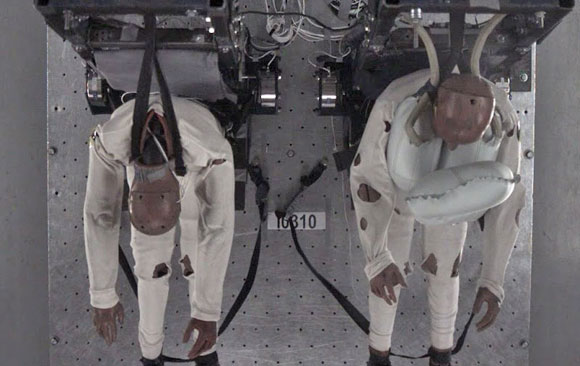
Technokontrol Aviation Technologies isn´t just designing the installation of not only one frontal, cockpit head display airbag but the installation of several multiple airbag modules in various side and frontal locations of the pilot & passenger seating positions, and sensors may deploy one or more airbags on an impact zone at variable rates based on the type, angles and severity of impact, the airbags are designed to only inflate in moderate to severe frontal, side, heavy, ground dragging, upside down, “belly flops” crashes or incidents.

Airbags are normally designed with the intention of supplementing the protection of occupants who are correctly restrained with seatbelts.

Most designs are inflated through pyrotechnic means and can only be operated once.

Our airbags will be installed at feet, knee, hip, back, neck, face, head levels and depending on the need, usage, client and the aircraft technical restrictions which we will select for each client or recommend which are the best options for each case and “custom design” from several frontal units to side-impact airbag modules which normally are activated and consist of compressed air cylinders that are triggered in the event of a side, lateral, dragging aircraft impact.
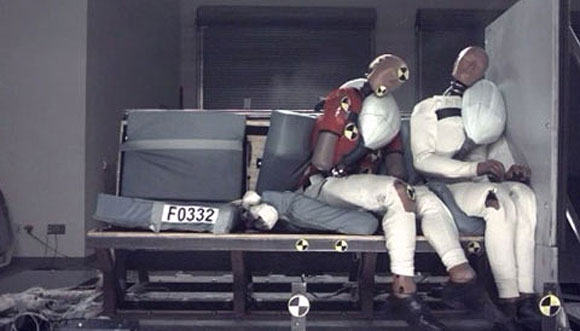

The aviation industry hasn´t taken too much in depth these light aircraft safety features as much as the vehicle transport industry and manufacturing sectors, the main reasons possibly being due to cost, the low numbers of deaths in comparison to the road traffic accidents and injuries numbers, however, we at Technokontrol Aviation feel that every manufacturer, designer must have the obligation to offer their clients the highest of safety and security standards to which then the client can decide if to move forward with us in regards to their own personal, family, health & safety or safety ideology, recommendations or not.

As an old pilot saying says, “It´s better to be on the ground and wish to be in the air than the other way round”, thus safety must be always paramount. If the investment were too high in comparison to the overall investment of the aircraft, training, maintenance costs or that the technology didn´t exist one could understand that “stand point” of not wishing in investing into their own safety and security due to not existing the option.

We are talking about one’s own life and even worse putting at oneself at risk as being the pilot, co-pilot, passenger, friend, family with no real reason as you know that you just can´t stop in “mid-air” to check the problem as once you are up or you land or you´re dead or not too much of in a good physical or mental condition if you are lucky enough to land and not end up dead or injured in the intent!

AIRBAG & AIRCRAFT PARACHUTE SYSTEMS IN AVIATION
The reason of doing a combination of Technokontrol Airbags & Ballistic Parachute Technologies is that even though the ballistic parachute systems has been and is and will be everyday more widely used and of great safety technological importance in any aircraft but especially for Technokontrol Aviation & Black Night Aviation we have seen that the “Parachute System” is not 100% perfect thus having to combine it with other of our unique, patented safety and security features and technologies as the already mentioned Technokontrol Aviation airbag technology.

The main reason for this is that no one can really state whom when or where an aircraft engine may fail, blow out, explode, or even catch alight or burn thus the parachute systems being in a position where its efficiency and operational safety value may be put at risk thus having a second opportunity as having airbags and non-ignition or anti-explosion fuel tanks for accidents, incidents, impacts or any type of crashes.

We have also investigated that due to the light weight of the aircraft and the size of the parachute in the event of strong winds the aircraft can be blown in any direction and there isn´t any “parachute direction controls” and being in hands of God or the Almighty!

No one will never know where one will end up or even being dragged during hundreds or thousands of meters through all types of ground types, rocks, streams and even landing or stopping, sinking into or inside a lake, river, or even at sea all depending on the winds final direction, failure position and wind air speed.

Thus at Technokontrol Aviation we recommend the use in combination of the Parachute Technology, of the installation of our “AIRBAG SAFETY TECHNOLOGY” to assure that the occupants, the aircraft, third parties if the aircraft being “dragged along” during hundreds of meters towards even power lines, dragged through forests, deserts, snow or ice or even against a building, town or city centre.
The damage inside the aircraft may be as limited as possible thus having the deployment of all or partial selected AIRBAGS in the worst scenario depending of the electronic airbag sensors being deployed.

As being also aircraft manufactures and pilots we also understand that we all have suffered from harsh, hard or even dangerous landings or take-offs to which we have designed our AIRBAGS SYSTEMS to be able to be activated “automatically or manually”.
Thus meaning that in the event of a normal landing even knowing that a harsh landing is very possible or rough take-off the pilot can “arm-activate” the AIRBAG SYSTEMS to become operational or not and only in the event that the “situation” may be getting out of hand the pilot has only to press a button or to switch a lever on the cockpit panel thus “arming-activating” the AIRBAG SYSTEMS.


Thus only then will the systems be operational and only if the landing-takeoff is really harsh/hard the “Airbag Emergency Deployment Systems” may be activated by the aircraft airbag sensors if they deem required by the electronic sensors systems.
If these sensors believe that the shouldn´t be any activation this will not occur either and once airborne or landed then the “Airbag Emergency Deployment Systems” may be again “de-activated/un-armed”, again not having wasted its deployment.

In the automatic mode the sensors will decide at all times if the risk, harsh landing is severe enough for deployment thus over-riding the pilot in this situation and thus each pilot deciding if to or if not to allow the safety technology to over ride the pilots decision to use the system, thus allowing both options manually or automatically.
We have all heard or known of some fellow pilot whom may have suffered from some kind of sickness, illness, heart attack, stroke, during a flight thus having the opportunity in having the “Parachute Safety Technology”.

However, also knowing that if the worst came to the worst the pilot can always know that if the aircraft may be landing harshly and may suffer or being dragged across all types of environments, ground, the “Airbag Emergency Deployment Systems” will again secure his/her/their chances of survival.

Also maybe being in a position to contact the authorities via GPS, detection tracking technologies or even a simple telephone call to inform of the possible crash landing location/ site, thus also giving those extra minutes for the emergency services to become aware of the situation and thus trying to reach the pilot/aircraft as soon as possible.

The best part is that in any medical risk situation of even physical fainting one must try just before or during “being taken ill” to activate both emergency systems even in the event of feeling better physically or mentally several minutes later the risk of trying to push through regardless as all pilots believe that one is un-destructible, the parachute and airbags which can be activated thus knowing that the chances of the illness happening again until landing being reduced and the risk of a severe crash are reduced drastically while in any either situation without either the chances or to say the least extremely slim or nil.
We are also designing the required technologies to make such emergency systems automatically “activates-armed” if the aircraft reaches a certain level of “gravity-g forces”. Or if the aircraft internal video cameras gyroscope systems believe that the aircraft is possibly out of control due to continuous dangerous or erratic “flying maneuvers as rolls, spins, cock-screws, steep dives, stalling positions, etc”.
In the event of the aircraft suffering more severe engine failure, structural damage, climatic damage as electric storms or partial or complete aircraft flying conditions the pilot then will be able to decide to firstly to activate the AIRBAGS systems and then the parachute systems or vice-versa.

As we all know that one “pulls” or uses a parachute systems the parachute will pull up the aircraft quickly and abruptly to a higher height with a large “tug-pulling sensation” which could by chance activate the AIRBAG SAFETY sensors if the weather, external climatic conditions, aircraft technical-operational conditions as if the aircraft where “free falling” for example.

This airbag deployment due to the “thrust-pull-tug” of the deployment of the parachute could make the situation worse thus recommending if the aircraft is in an extreme un-operational position to firstly activate the parachute systems, then suffer the “tug-pull up sensation” and then activate the AIRBAGS SAFETY systems thus if the parachute landing goes well and the parachute landing speed is normal then the sensors not activating the airbags thus saving their unnecessary use and deployment.
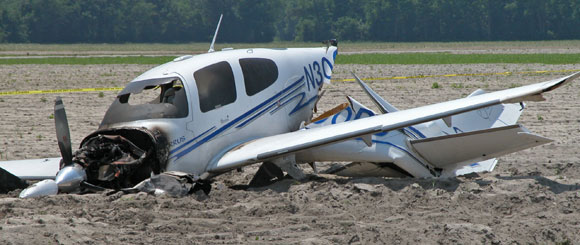
If on the other hand the parachute may be damaged due to aircraft debris loss, fire, or due to a harsh landing or “belly flop” then the AIRBAGS will be deployed to protect the occupants of the aircraft as it was designed to do so but only if really required so and not for the sake of its unnecessary use.

Ballistic Rescue Aircraft Parachute Technologies.
Components
A ballistic parachute system is a solid-fuel rocket system used to pull the parachute out from its housing and deploy the canopy fully within seconds. Typically on ultra-light, light aircraft installations the rocket is mounted on the parachute container. On larger aircraft installations the rocket may be remotely mounted.

Over the years the ballistic rescue parachute systems have been employed and have been improved and updated and the current versions. There is also a separate rocket installation that can be removed from the parachute so the parachute can be sent for re-packing without the problems of trying to ship the rocket as well.

Typically the parachute requires repacking every six years and the rocket requires replacing every 12 years.


Airbag landing systems

The aerospace industry and the US Government have applied airbag technologies for many years. NASA, and US DoD have incorporated airbag systems in various aircraft and spacecraft applications as early as the 1960s.
The first use of airbags for landing were Luna 9 and Luna 13, which landed on the Moon in 1966 and returned panoramic images. The Mars Pathfinder Lander employed an innovative airbag landing system, supplemented with aerobraking, parachute, and solid rocket landing thrusters. This prototype successfully tested the concept, and the two Mars Exploration Rover Mission Landers employed similar landing systems. The Beagle 2 Mars Lander also tried to use airbags for landing, but the landing was unsuccessful for reasons which are not entirely known.
Airbags have also been used on military fixed wing aircraft such as the Escape Crew Capsule of the F-111 Aardvark.
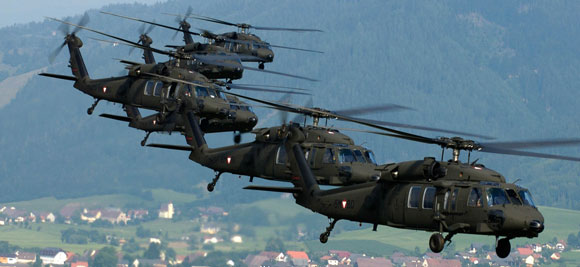
Airbag Occupant Protection
The US Army has incorporated airbags in its UH-60A/L Black Hawk and OH-58D Kiowa Warrior helicopter fleets. The Cockpit Air Bag System (CABS) consists of forward and lateral airbags, and an inflatable tubular structure (on the OH-58D only) with an Electronic Crash Sensor Unit (ECSU). The CABS system was developed by the US Army Aviation Applied Technology Directorate, Fort Eustis, through a contract with Simula Safety Systems.

It is the first conventional airbag system for occupant injury prevention (worldwide) designed and developed and placed in service for an aircraft, and the first specifically for helicopter application.
Airbag Triggering Conditions & Technologies

Airbags are designed to deploy in frontal and near-frontal, barrier collision, or similarly, striking a parked objects of similar size across the full front of each at about twice the speed. There are no national or International regulations are performance based, rather than technology-based, hence, airbag deployment threshold is a function of overall airbag design for aircraft thus whatever we deem sufficient for a car safety performance we at Technokontrol Aviation must strive to surpass at all levels and standards.

Unlike crash tests into barriers, real-world crashes typically occur at angles other than directly in to the front of objects and especially in aircraft crashes where there are no real data for airbag deployment, and in many cases the crash forces usually are not evenly distributed across the front of the vehicle.
Consequently, the relative speed between a striking and struck vehicle required to deploy the airbag in a real-world crash can be much higher than an equivalent barrier crash. Because airbag sensors measure deceleration, vehicle speed is not a good indicator of whether an airbag should have deployed. Airbags can deploy due to the vehicle's undercarriage striking a low object protruding above the roadway due to the resulting deceleration.
The airbag sensor is a MEMS accelerometer, which is a small integrated circuit with integrated micro mechanical elements. The microscopic mechanical element moves in response to rapid deceleration, and this motion causes a change in capacitance, which is detected by the electronics on the chip that then sends a signal to fire the airbag. The most common MEMS accelerometer in use is the ADXL-50 by Analog Devices, but there are other MEMS manufacturers as well.

Nearly all airbags are designed to automatically deploy in the event of a vehicle fire when temperatures reach 150-200 °C (300-400 °F). This safety feature, often termed auto-ignition, helps to ensure that such temperatures do not cause an explosion of the entire airbag module.
Today, airbag triggering algorithms are becoming much more complex. They try to reduce unnecessary deployments and to adapt the deployment speed to the crash conditions. Algorithms may take into account such factors as the weight of the occupant, the seat location, seatbelt use, and even attempt to determine if a “baby seat is present” as stated in our aircraft detection AIRBAG systems where the pilot will be able to select if flying alone or with co-pilot and even passengers.

TECHNOKONTROL ANTI-FIRE/IGNITION/THERMAL & ANTI- EXPLOSION FUEL TANKS.
Although we are constantly working so as to bring new aviation safety products to the market we believe that a combination al many technologies is what is best for the aviation industry as it should be as safe as possible regardless of aircraft size, importance or usage.
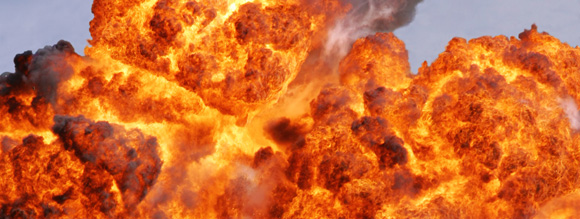
- We are currently producing special anti-fire/thermal, anti-explosion aviation alloy formulas and patented materials (for both smaller and larger planes alike) which can be installed within the planes fuel tanks and will be both explosion and fire proof.
- Less expensive, thinner and lighter fire, thermal proof materials in which studies have proven that we can significantly reduce an aircrafts annual running costs due to weight reduction and increased range and fuel efficiency.
- Once deposited, installed within the aircrafts fuel tanks, Technokontrol Aviation Safety Alloys can ensure that our products can take away any threat of an explosion, ignition, high intensity thermal-fire exposure as petrol-chemical based fires, ignition or explosions occurring at any stage but especially at refueling due to human errors, static charges, electromagnetic waves, accidents, health & safety procedure failures, mechanical or electrical incidents, etc.
- Technokontrol Safety High Speed Refueling and Anti-Explosion Fuel Valves which can reduce delivery times (unloading times) of the jet fuel from the tanker to the plane by as much as 50%.
- Technokontrol also offer the great advantage not only of non-explosion fuel tanks but also anti-algae growth in the fuel which many times after periods of non-flying the stored fuel is of extreme low quality, non-operational. damaged and thus causing engine failures due to bad combustion of fuels in the engine of even fuel filter blockages.
- If the aircraft hasn´t ever had algae growth using Technokontrol Safety alloys this will never occur and if they has been already some algae growth this will immediately stop getting worse but not completing stopping it.
- In the case of metal or fuel tanks with metal composition not only does the use of Technokontrol Safety Alloys stop algae growth as stated but also all fuel tank oxidation or corrosion with again will allow the operational fuel tank to last much longer with also the other benefits of non-sloshing, anti-vaporization, anti-algae, anti-ignition, etc.
- Other beneficial factors are that the weight of the alloy being of only 0,33 grams per liter of the fuel tank and only occupying 1%-1,5% of the fuel tank capacity thus only losing for every 100 liters, 1 to 1,5 liters of net volume.
Please read our Technokontrol Safety Alloys catalogue
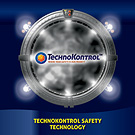
- Navigate or download our 2023 Brochure
English-Spanish-French

Tecnokontrol Aviation not only delivers the above mentioned safety & security technologies but also and greater efficiency benefits but we can also offer our clients much greater aeronautical flying stability benefits as “anti-sloshing” and “anti-fuel vaporization” fuel tanks.
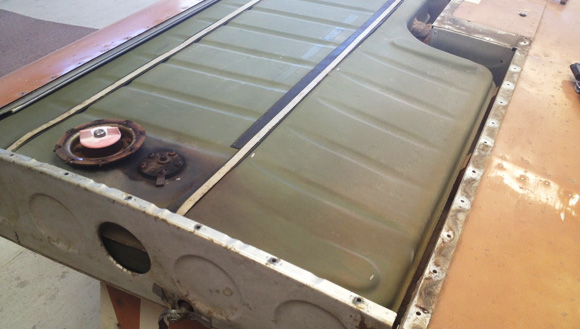
Our mesh or ball format (which can be easily installed within any fuel tank at its servicing period) will bring with it an extra benefit of "sloshing" reduction.
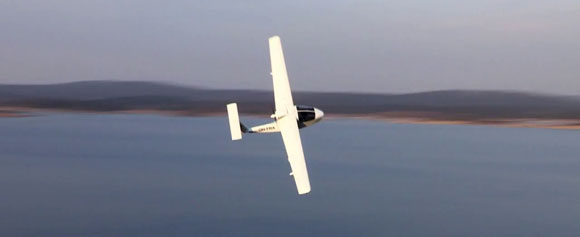
Any pilot knows that within smaller aircrafts the fuel tank "sloshing" movement is an important issue especially in bad weather where onboard flight computers are not in place so as to re-balance the aircraft.
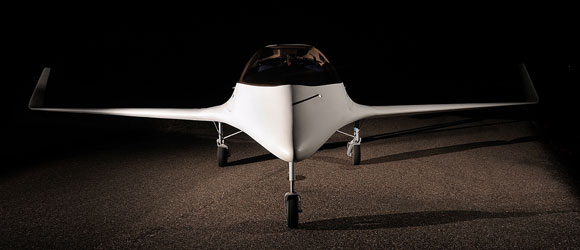
Thus having our specially designed Techokontrol Alloy mesh format within the fuel tank which will allow the pilot to enjoy a much more stable and secure flight, landings, take-offs and will ensure that their turns, maneuvers, landings and aircraft stress sections are all made much easier to handle and to protect due to this additional safety and security “anti-sloshing systems”.
Technokontrol Aviation Bullet-Proof & Heat/Fire Resistant Aircraft Panels
Due to many of Technokontrol clients being governments, large international corporations and private individuals based in countries where the risk of terrorism or sabotage is greater due to geo-political or religious/social/military/crime issues we have the possibility to combine our heat/fire resistant 4 mm thick panel-textile which protects up to 1600º direct heat/fire blast for over three hours with a Level III-VIII bullet Proof protection panel.

Due to both panels not extending in joint/combined dimensions 10-15mm, ultra-light weight this is a great product to stop fire/heat exposure due to accidental fire, terrorism or fire bombs attacks and at the same time direct arms attacks up to Level III-VIII+. In the event of the client wishing to increase either or both levels or protection this can be easily done by joining more panels to increase its protection levels.

Suggestions and Fire arms Selection charts for selecting Bullet-Resistant Materials.

IMAGES AND REAL LIVE EXAMPLES OF AIRCRAFT OR AVIATION CORPORATIONS WHO DIDN´T HAVE ANY OF OUR SAFETY TECHNOLOGIES AND THIS IS WHAT MAY HAPPEN TO ANY OF US WITHOUR SAFETY MEASURES!


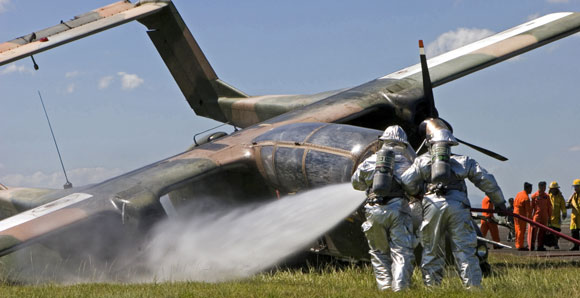
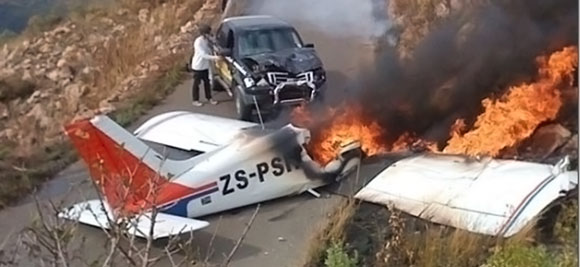
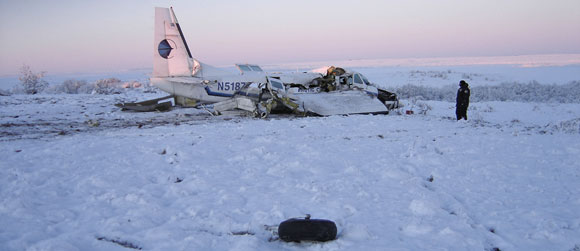





Technokontrol Certificates & Associations
Technokontrol Manufactures, Designs & Researches our safety products in the European Union at the highest possible International Accident,Health & Safety standards.
TechnoKontrol is a member of the NFPA
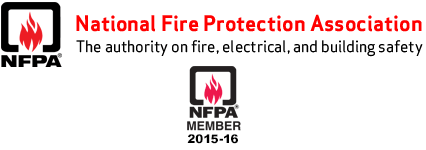
TechnoKontrol Products are ATEX Compliant
(European Antiexplosive Safety Directives)

Technokontrol's Products & Services are insured by

Certificates



































Videos of TK Aviation Safety Technologies
- Live anti-thermal, bullet proof undercarriage without any undercarriage for emergency landings
- On fire-ignited fuel tank refueling video
- Eagle Eye III Surveillance Aircraft in action
Products
What is B.L.E.V.E. explosion?
TechnoKontrol Wikipedia

TechnoKontrol: 1st in Spain for own Technology patents 2013 & 2014

- Ministerio de Industria Turismo y Comercio-OEPM
Technokontrol, the number 1 corporation in Spain filing for its own technology patents, trademarks and utility patents (SPA) - OEPM 2013 The year in numbers (SPA)
TechnoKontrol has been fully verified and certified by Bureau Veritas

Certificates
- ISO 9001 - ES108784-1
- ISO 14001 - ES108782-1
- ISO 45001 - ES108783-1
- ISO 4126
- ISO 28000
- ISO 37000
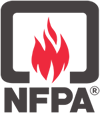
NFPA-National Fire Protection Association
NFPA-Asociación Nacional de Protección contra el fuego
TechnoKontrol is a member of the NFPA
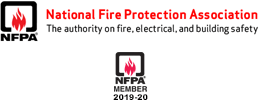
NFPA 69: Standard on Explosion Prevention Systems, 2016 Edition
Prevent deflagration explosions due to combustible dust particles, gases or vapors with NFPA 69. Combustible dust, gases and vapors produced in industrial settings can pose a significant safety hazard.NFPA 69: Standard on Explosion Prevention Systems offers definitive guidance on explosion protection and prevention systems.
ATEX - European Antiexplosive Safety Directives

- ATEX Guide: Protection in explosive atmospheres
- ATEX-EU/HAZLOZ-USA/NFPA-USA/DSEAR-UK/Explosion Directives TechnoKontrol Additional Anti-Explosion Data
- ATEX Directive in EU Directives
Dangerous Substances and Explosive Atmospheres Regulations - United Kingdom/ATEX

United Nations Economic Commission for Europe - UNECE - TechnoKontrol

- TechnoKontrol information for the UNECE BLEVE working group
Proposal transmitted by the governments of Spain and France
The European Parliament and The Council

Technokontrol's Products & Services are insured by

Dossiers TK Group of Companies
TK-Global Engineering - Where efficiency and reliability become a reality


BP World Report
Static Electricity Dangers and Protection
- Static Electric Discharge Hazard On Bulk Oil Tank Vessels
- Static Electricity - ISGINTT
- Dangers of static electricity and protection in aviation
- Static Electricity - IAPA
- U.S. Chemical Safety and Hazard Investigation Board
US Department of Transport
USA Chemical Safety Board
An independent federal agency investigating chemical accidents to protect workers, the public, and the environment.
About the CSB
CSB Safety Videos
- Chevron Richmond Refinery Explosion
- Deadly Contact
- West, Texas Real Live Blast Damage Video
- Hot Work - Dupont Explosion
- Static Sparks Explosion in Kansas
- Danger of Flammable Gas Accumulation
Articles
- Energy Sector Vulnerabilities: Petroleum (Spanish)
 Safety Products System
Safety Products System Eco-Energy Power Plants
Eco-Energy Power Plants TK Aviation
TK Aviation Environmental Industries
Environmental Industries Mining
Mining Petroleum Industry
Petroleum Industry Industrial Projects
Industrial Projects Maritime Industry
Maritime Industry Military Vehicles
Military Vehicles Transportation & Auto
Transportation & Auto Construction Industry
Construction Industry Global Food Industry
Global Food Industry Electronic Safety Systems
Electronic Safety Systems Housing Projects
Housing Projects